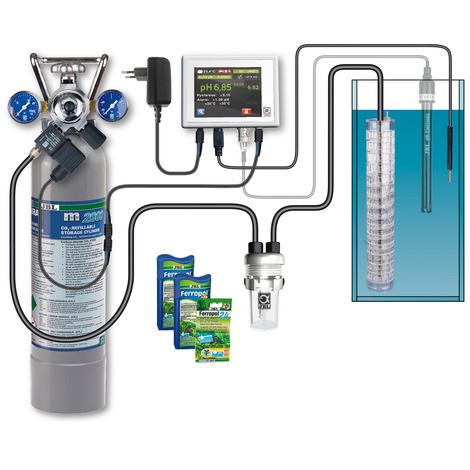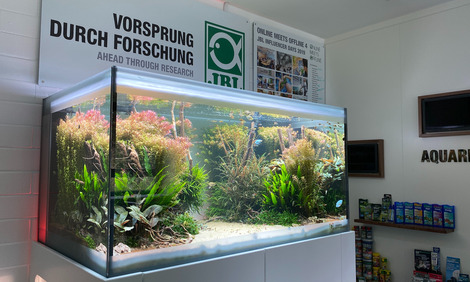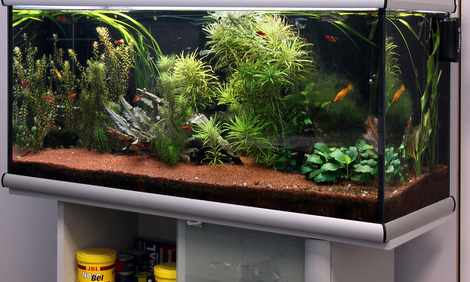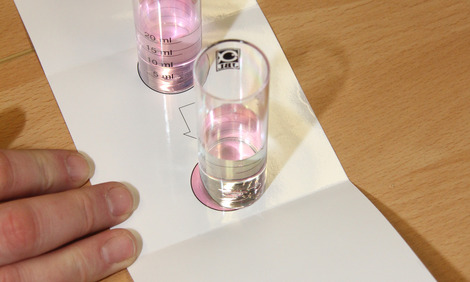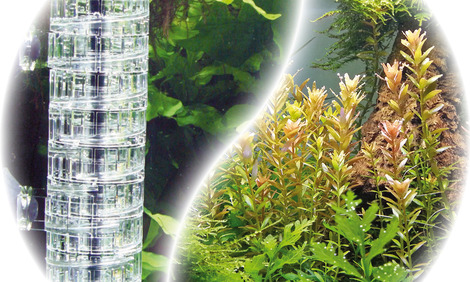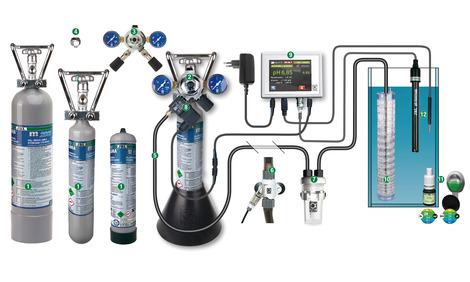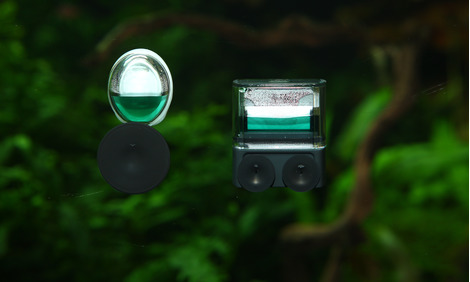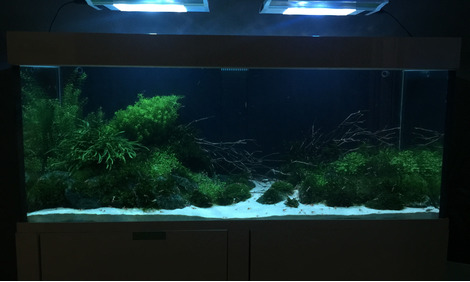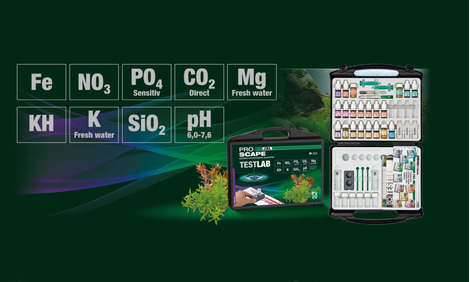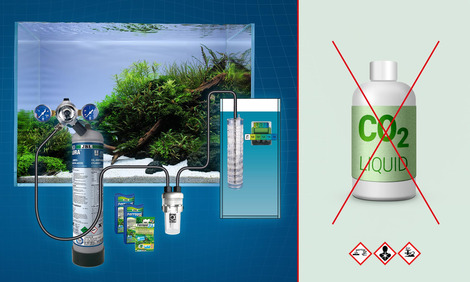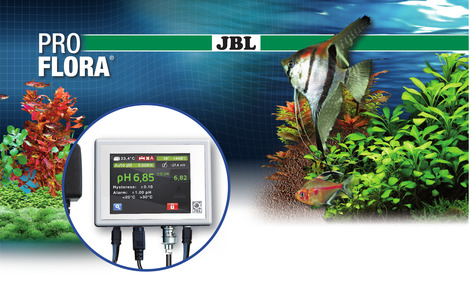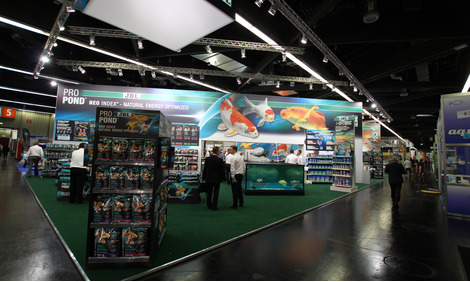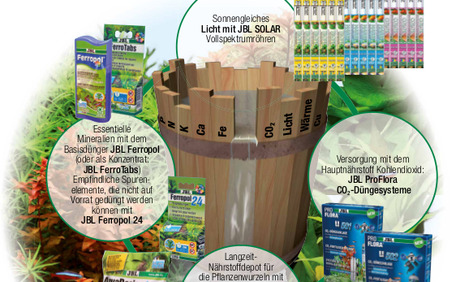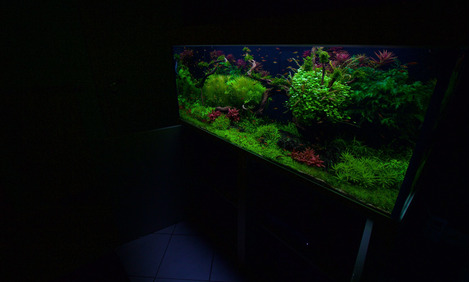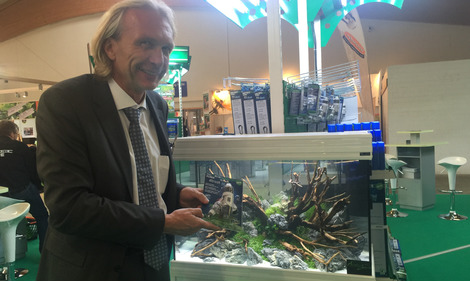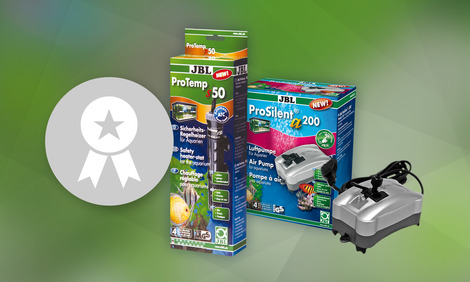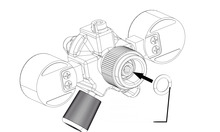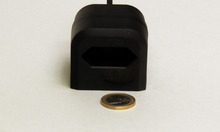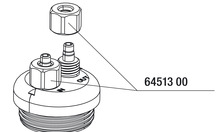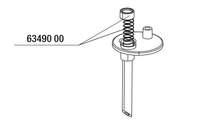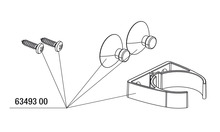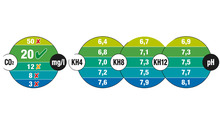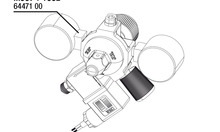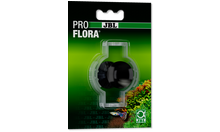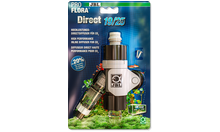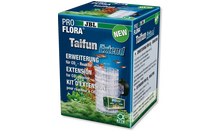Nutrition for aquarium plants
Plants provide the aquarium with vital oxygen for the aquarium dwellers, prevent algae growth, remove pollutants, provide hiding places and reduce pathogens. The JBL plant fertiliser systems supply the plants with the main nutrient CO2 through the water. They absorb this through their leaves.
Easy to install
The system comes completely ready for connection. Screw the pressure reducer onto the CO2 storage cylinder. Connect the pressure reducer with the hose to the pH controller and from there over the bubble counter/check valve to the diffuser in the aquarium. The CO2 enters the aquarium and is dissolved in the water by the diffuser.
Safe
The storage cylinder is TÜV tested and is equipped with an overpressure relief. Thanks to the check valve no water can enter the cylinder. The enclosed stand prevents the cylinder from falling over. The capacity of a CO2 system depends on various factors. The carbonate hardness, the quantity and species of the plants and the strength of the water surface movement are decisive. A 500 g cylinder in its default setting lasts for about 4 months.
Why isn’t the pH sensor (electrode) included?
This is because of the lifetime of the electrode. The CO2 system is not necessarily sold as soon as the specialist dealer receives it: it can sometimes stay on the shelf for some time. If the pH electrode were part of it, it would age unused during this time. Since the service life is about 2 years after production we want to make sure that the user always gets a brand-new sensor, so we sell it separately.
JBL PROFLORA m2003
Complete plant fertiliser system with 2 kg cylinder and pH control device
- CO2 fertiliser system with pH control device for the automatic feeding of fast and slow growing plants in freshwater aquariums up to 1000 l
- Easy to use and efficient: refillable 2 kg cylinder. Simple assembly, no separate water pump required, convertible into disposable system
- Professional water care, automatic control: exact dosing with pressure reducer, even release, effective distribution thanks to expandable diffuser. Check: bubble counter with check valve. Residual pressure display on pressure gauge
- TÜV tested storage cylinder with overpressure relief. Stand prevents cylinder from falling over. Hose screw connection prevents hose from slipping, check valve prevents water entering the cylinder
- Package content: 2 kg CO2 cylinder, pressure reducer, pH controller (pH sensor not included), diffuser, bubble counter, hose, backflow stop, liquid fertiliser, daily fertiliser
JBL PROFLORA m2003
Properties
| Animal species: | Arowana, Axolotl, Barbels, Bettas, Bichirs/reedfish, Blowfish, Catfish, Cichlids (South America), Crayfish, Danions, Discus, Dwarf shrimps, Flowerhorn, Goldfish, Gouramis, Guppy, Juvenile fish, Killifish, Livebearers, Loaches, Mussels, Panchaxes, Rainbowfish, Snails, Spiny eels, Tetra, Veiltails, freshwater butterflyfish |
| Animal size: | For all animal sizes |
| Animal age group: | All aquarium fish |
| Volume habitat: | 1,000 L |
| Material: | plastic (PC), metal (steel), metal (brass) |
| Colour: | multicoloured |
| Transport conditions: | Protect from direct sunlight during storage and transport and ensure good ventilation. |
Electronic label / illuminant
| Mercury: | No |
| Dimmable: | No |
Technical Data
No, because this can lead to the destruction of your pressure reducer. To ensure safe operation, all storage cylinders should only be operated upright. Never operate them in a lying position or upside down.
When the electromagnetic valve is switched off, the pressure in the entire system from the cylinder to the pressure regulator and the tubes and to the electromagnetic valve persists. When the valve is opened, the pressure in the system escapes first and then the system continues to operate as usual.
You can decrease / prevent this by reducing the operating pressure in your pressure regulator. In our new pressure regulators, this can be done with an Allen wrench under the black cover top.
At first the air hoses and special CO2 hoses can easily be pushed on the connection piece. The hoses harden more and more as the months go on and can only be removed from the connection piece using great force. If you pull the hose hard it will only strain the connection, which could, in the worst case, even break off. Instead cut the hoses you want to remove laterally at the ends and carefully remove them. For this it’s always advisable to install hoses with some reserve in its hose length.
Owing to a production fault a green colour change may not occur with the batches 1000 and 1001, despite increased CO2 supply.
Should you have one of the above mentioned batches, you can request a new refill set free of charge upon presentation of the sales receipt and a photo of the batch number. Please contact our customer service under: https://www.jbl.de/support/
Algae problems in an aquarium can never be traced to just one factor or general condition, and instead, are always the result of a combination of different factors, which include light, fertilization, water changes – specifically, how often and how much – feeding, fish population and, of course, the specific water parameters.
According to analyses that were performed over a course of a number of years, red algae, at least the common brush algae and beard algae, occur in descending order at the following parameters:
1) too little carbon dioxide (in relationship to 100 % of the measured tank); the pH level should be in the slightly acetic range, depending on the carbonate hardness, in every case.
2) elevated phosphate levels (over 90 %); phosphate limitation by means of JBL PhosEx ultra is often helpful here.
3) too little and too irregular fertilization (there should always be traces of iron at least).
4) insufficient water changes; a weekly water change of over 30 % is recommended for algae problems.
5) not enough fast-growing plants.
The rapid drop in the cylinder pressure shortly before the end of the charge does not constitute grounds for complaint, and instead, is normal and unavoidable from a technical standpoint.
Reason: The cylinder is filled approximately halfway with liquid carbon dioxide. You remove gaseous CO₂ from the cylinder; the corresponding share of the liquid CO₂ passes to the gaseous phase; the pressure remains constant. It isn’t until less CO₂ passes from the liquid phase to the gaseous phase that the cylinder pressure begins to drop.
This means your system is functioning normally.
The retaining spring in the check valve fits very tightly and ensures that no water can return. Therefore the air pressure of a diaphragm pump or our breath is not strong enough to open the spring. The valve can be opened by the pressure of the ProFlora bioCO2 systems and also the m and u series. Check valves used in air systems have a smaller counter-pressure and are also part of the JBL range.
Please check whether the check valve (JBL SafeStop) is installed properly. It should be installed as the last element before the reactor and with the tip of the arrow pointing to the reactor (JBL Taifun).
The connections on reusable CO₂ systems are generally standardised so that they can be used with other cylinders, with the exception of a few cases.
However please note the following restrictions. Some larger-sized cylinders are not approved for non-stop operation with pressure reducers and you will lose your warranty claim if you use such systems.
You need a separate soleniod valve (JBL ProFlora v002 or JBL PROFLORA CO2 VALVE) to control the CO2 supply. A further night switch-off for CO2 systems, controlled by a pH control unit is not needed, as the CO2 supply will not be turned on in the absence of CO2 consumption, or it will happen less frequently when CO2 degassing occurs at the water surface. That is why the control units do not need a timer
1. Increase the volume of water changed each week to about 30-50%.
2. Fertilise regularly after each water change, e.g. with JBL Ferropol.
3. If necessary add a daily dose of Ferropol 24.
4. If algae promoting nutrients (especially phosphate) are present in higher quantities, use e.g. JBL PhosEx ultra to keep them under control.
5. Most important is carbon dioxide. Beard and brush algae are always a sign that there is too little carbon dioxide in the water. If a CO2 system is in use, increase its dosage. Alternatively consider installing a CO2 system like JBL ProFlora u401 or m601.
6. Put in fast growing stem plants as nutrient competitors.
7. If there is strong current, reduce it slightly.
Please note two important points:
1) Cylinder: Reusable cylinders are TÜV tested and this is stamped on the cylinder. This test needs to be renewed every 10 years, with the bottom of the cylinder and the valve sealing and threaded joint being tested.
2) The carbon dioxide: Depending on its concentration, carbon dioxide is harmful in the air.
The respiratory rate and pulse rate increase at a carbon dioxide concentration of 3-5%. Other symptoms are headaches, discomfort and ringing in the ears. Carbon dioxide concentrations of 8-10% and more cause these symptoms to become more pronounced. This may lead to cramps, fainting, apnoea and death from suffocation.
One 500 g cylinder contains 500 g CO2. This is equal to 11.36 mol (chemical substance amount unit). One mol of a gaseous substance has a volume of 22.414 l under normal conditions (273.15 K, 101325 Pa), so that 500 g of CO2 result in a volume of 254.7 l. CO2 is heavier than air, so that it collects on the ground. This corresponds to a CO2 height level in the range of 12.735 mm = 1.27 cm for a room of 20 m². If it is mixed completely with the air in a room of 20 m² and a height of 2.5 m (corresponds to 50,000 l), this corresponds to a maximum gas concentration of 0.5 volume %, which is well below the dangerous level.
The cylinder pressure of 50 – 60 bar, depending on the room temperature, remains constant until the cylinder is almost completely empty. The easiest method is to weigh your CO2 cylinder incl. bracket when it is completely empty. This way you will know the exact tare weight of your CO2 cylinder with its attachment parts at any time. If you forget it you can read the tare weight on the CO2 cylinder (stamp marking at the neck of the cylinder) and add 0.5 kg for the safety bracket. A full m500 CO2 cylinder with security bracket weighs according to that tare + 1 kg (0.5 kg bracket + 0.5 kg filling) – a m2000 tare + 2.5 kg (0.5 kg bracket + 2 kg filling).
During aeration and/or when there is a strong current, a gas equilibrium is achieved between the ambient air and the water. As a result a corresponding but very low CO2 content occurs too. BUT this low CO2 content is far too low to for most aquarium plants to thrive. The aquarium owner is therefore dependent on an additional CO2 supply by a CO2 fertiliser system. The higher CO2 content this achieves is reduced or, as commonly referred to in aquatics, expelled by the aeration and strong current. Therefore well planted aquariums should only be slightly aerated at night, if required.
Reviews
0 Reviews
2 more reviews in other languages
2 Reviews in other languages
Ten zestaw to marzenie każdego akwarysty roślinnego!!! Bajecznie prosta kalibracja sprzętu który tak naprawdę może zrobić nawet nowicjusz to duży plus tego zestawu. Alarm który mówi o wahaniach temperatury czy co2 daje spokój i komfort dla akwarysty.
Megaaaa coole Anlage hab ich mir mal gegönnt zwar ist sie sau teuer aber ist einfach echt der Hammer. Ich kann diese Anlage wirklich nur weiter empfehlen. Auch für die Technikfreaks ein schönes Spielzeug :) Und was ganz wichtig ist vergisst den pH Sensor nicht zu bestellen ohne den geht garnichts.

